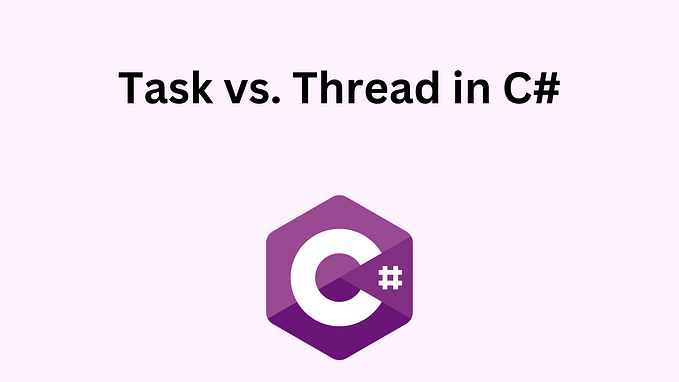Member-only story
Types of Parallelism in C#

Parallelism is an essential concept in modern computing, and it enables us to achieve significant performance gains by performing multiple tasks simultaneously. In C#, there are several types of parallelism that developers can leverage to optimize their code and increase its efficiency. In this article, we will explore the most common types of parallelism in C#, along with examples of their implementation.
- Task Parallelism
Task Parallelism is a form of parallelism that involves breaking down a large task into smaller, independent sub-tasks that can be executed simultaneously. In C#, the Task Parallel Library (TPL) provides a high-level abstraction for creating and managing tasks.
Here is an example of Task Parallelism in C#:
using System;
using System.Threading.Tasks;
class Program
{
static void Main()
{
Task[] tasks = new Task[10];
for (int i = 0; i < tasks.Length; i++)
{
tasks[i] = Task.Factory.StartNew(() => Console.WriteLine("Task {0} running", i));
}
Task.WaitAll(tasks);
}
}In this example, we create an array of 10 tasks, and each task executes the same lambda expression, which prints out a message indicating that it is running. We then wait for all tasks to complete using the WaitAll method.
2. Data Parallelism
Data Parallelism involves dividing a large data set into smaller chunks and processing them in parallel. This is a common technique for optimizing algorithms that involve large amounts of data processing.
In C#, the Parallel class provides a set of methods for performing data parallelism, such as Parallel.For and Parallel.ForEach.
Here is an example of Data Parallelism in C#:
using System;
using System.Threading.Tasks;
class Program
{
static void Main()
{
int[] data = new int[10000000];
Parallel.For(0, data.Length, i =>
{
data[i] = i * i;
});
}
}In this example, we use the Parallel.For method to iterate over an array of integers and square each element in parallel. The method automatically divides the work into smaller chunks and assigns them to separate threads for parallel processing.







